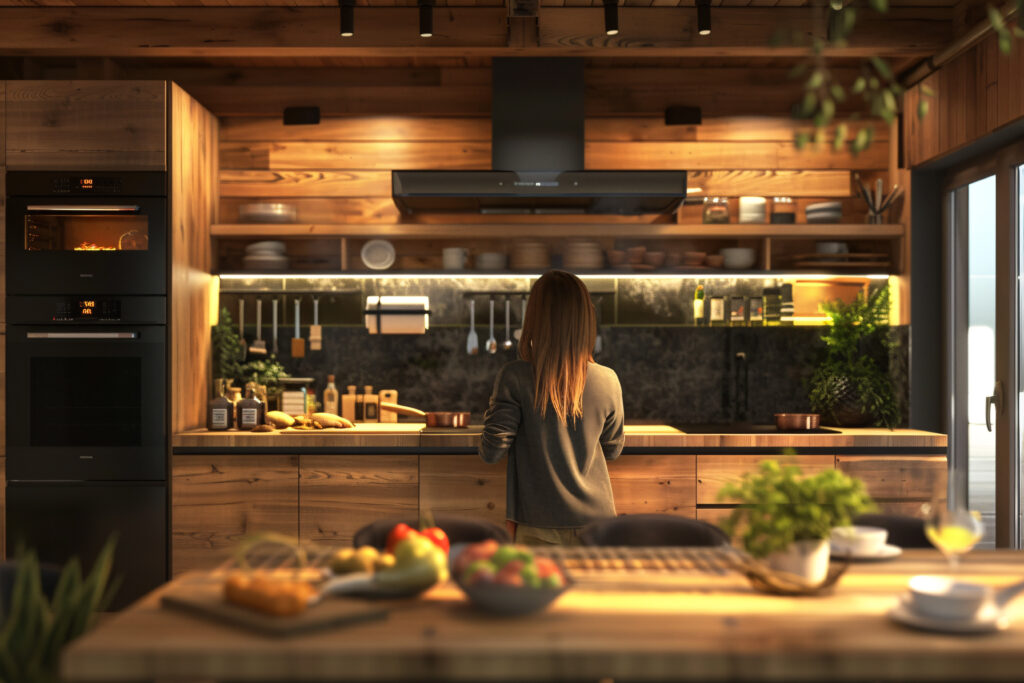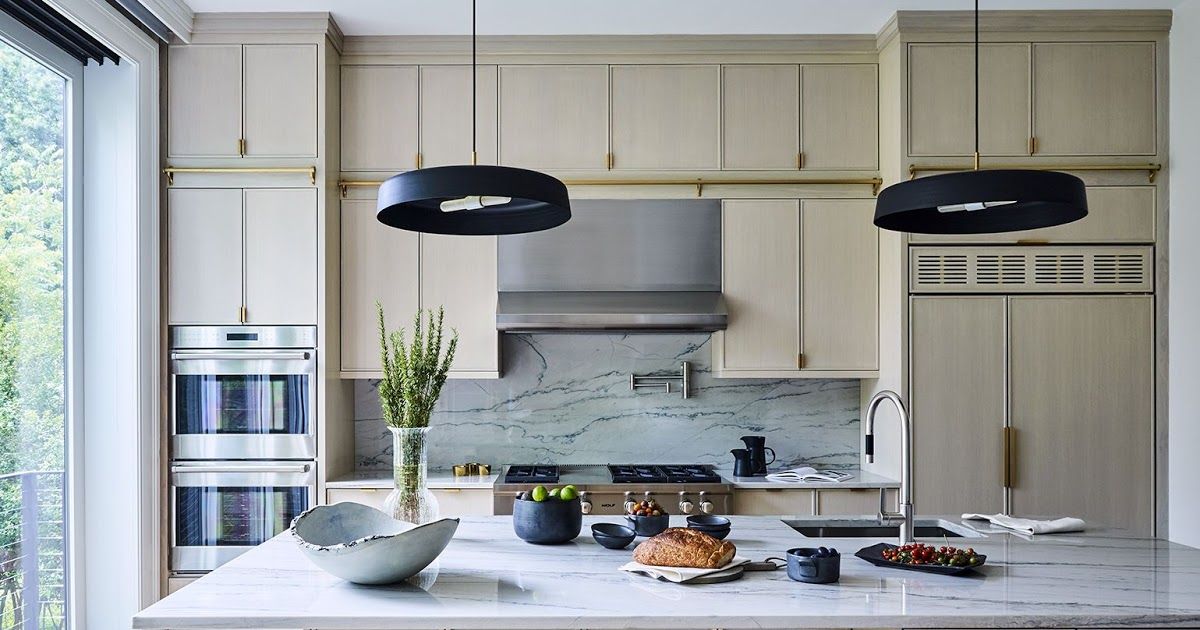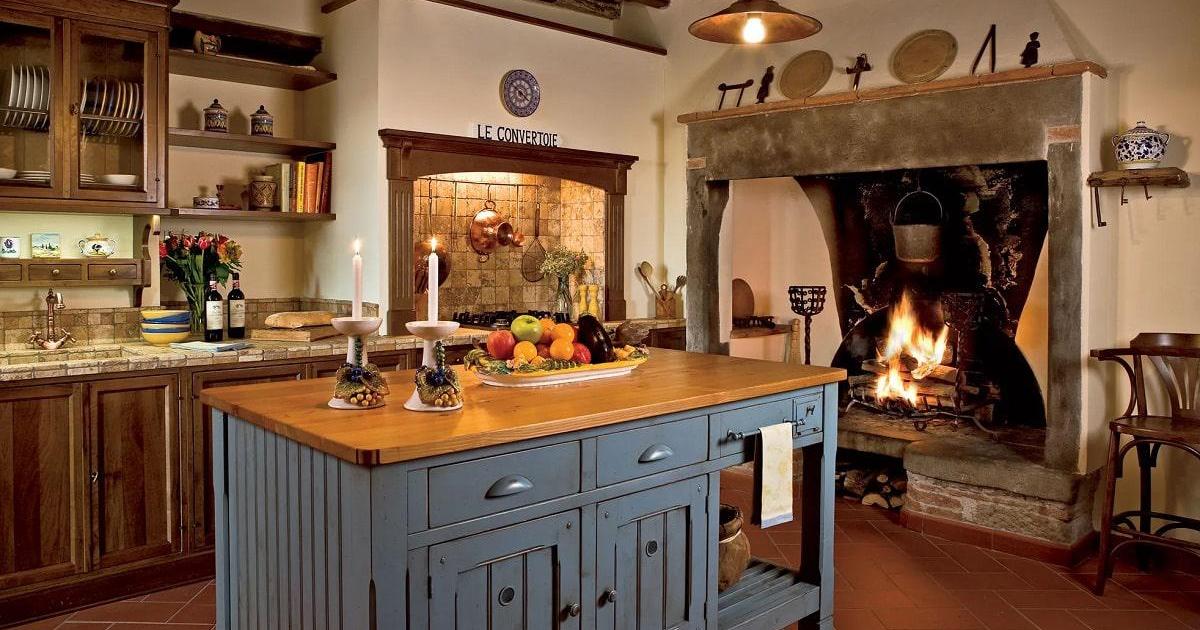Why is Lighting Important in the Kitchen?
Lighting in the kitchen is a necessity but more so because it forms essential part of the overall design and feel of the whole space. Maintaining the right light in the kitchen not only makes the kitchen an easy place to cook but allows visibility to prepare the meal as well as improve the atmosphere to eat and entertain. Even the most beautifully-designed kitchens can be dull or even impractical without proper lighting.
As well, the kitchen can be a multitasking area, that is, various parts of the kitchen can have various lighting needs. In the explanation, light intensity and direction of the lights above the cooking area must be high and focused, but as compared to the dining area; the intensity and direction of the light should be less, but more diffused. You may get more ideas about beautifying your space by just visiting Homewavey.
How Do I Choose the Best Kitchen Lights for Different Zones?
A good kitchen lighting design will include different layers where the lamps are utilized in various functions.Some of the areas that can be addressed are as follows:
Task Lighting
Task lighting is important whenever you require certain areas where you need concentrated light to carry out certain activities like cooking or preparing food. This light must be intense and focused so that your working environment is well lit and safe.Task lighting can be replaced by some of the following:
Under-Cabinet Lights: These lights are normally fitted below upper cabinets and provide direct and shadowless lighting to countertops, and are therefore the best option in the food preparation region.
Pendant Lights: Pendant lights are suspended and are a trendy and handy method of task lighting around kitchen islands or breakfast bars.
Recessed Lighting: Recessed lights are designed to be built into a ceiling surface, therefore, they might offer a smooth, non-obtrusive task lighting without taking up a significant amount of counter/ceiling space.
Pro Tip: Design Milk says that task lighting is the key to building a workspace in the kitchen that you will be able to work in. They suggest dimmable LED lights, so that the lighting level can be adjusted accordingly to various activities[Design Milk, 2025].
Using small space for your home in a usable manner makes the great difference in your interior designs just like it can be a small laundry area deigns
Ambient Lighting
The overall lighting of the entire kitchen is in the form of ambient lighting. It must be well-lit to light up the whole room without creating any unnecessary sharp shadows and glare lights. When you are entertaining or having a meal in the kitchen, lighting up your kitchen environment creates a warm atmosphere in the kitchen.
Ceiling Fixtures: Ceiling lights are those installed on the ceiling, such as chandelier or in-wall lights, which serve as the ambient lighting foun d in most kitchens.
Recessed or Track Lighting: In addition to this, they can also be used as ambient lighting in cases where you are interested in a more modern or clean look. Such lighting sources can be adjusted to diffuse light in the room.
Pro Tip: The interior designer, Sarah Richardson, who appeared on HGTV suggests combining various light sources, such as ambient light, to create a balanced and welcoming kitchen. [HGTV, 2025] She suggests combining cool lighting with brighter task lighting to create a wonderful atmosphere.
Here comes the idea of making your space more stylish and beautiful not more than the hampton’s home style.
Accent Lighting
The lighting is accentual in that some sections or areas in the kitchen are brought to the foreIt adds interest and depth to the picture, highlighting architectural elements, artwork or a special backsplash. Not every kitchen will need accent lights but it will help provide the kitchen with a certain degree of elegance and style.
Track Lighting: Track lights are movable and are thus most appropriate to light a particular object such as a display shelf or artwork.
Accent: Under-Cabinet Lights would also serve as accent lighting to light up spaces between the cabinets and the counter-top to make it feel warm.
Pro Tip: Houzz, one of the most popular interior design websites, emphasizes that the accent lighting is the best choice to give your kitchen some character, in case you have something in your kitchen, such as an accent backsplash or open shelving, that you would like to display[Houzz, 2025].
You can make your kitchenette small walls as beautiful as your accent walls or the features walls of your home.
What Types of Kitchen Lights Should I Consider?
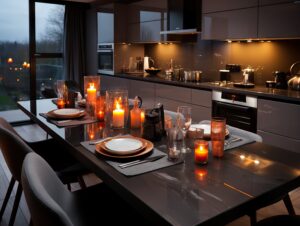
There is a variety of lighting fixtures that can be combined to achieve the desired combination of task lighting, ambient lighting, and accent lighting. The following are some of the most popular:
Pendant Lights
Kitchen lighting Pendant lights are a classic selection of kitchen lights. They can be used as a source of task lighting or accent lighting, and come in an enormous variety of styles, sizes and materials. When mounted on top of a kitchen island, they not only help to illuminate the kitchen but are also a fashionable design.
Single Pendant: One large pendant light will create a strong point of interest in the kitchen.
Many Pendants: Smaller pendant lights in a row will help to create a more vibrant and modern atmosphere, particularly around kitchen islands or dining
Recessed Lighting
Recessed lighting also referred to as can lights is commonly used in kitchens due to its smooth and non-obtrusive look The lights are fitted to the ceiling giving it a clean and modern appearance. Depending on their arrangement, they can be used as ambient, task, or accent lights.
Expert Tip Recessed lighting can be used anywhere, however, according to the experts at Design Milk, recessed lighting must be carefully installed so as not to cast dark spots. They advise using them and spacing in enough space so they can be evenly distributed[Design Milk, 2025].
Under-Cabinet Lighting
Under-cabinet lighting is the best option for task lighting. It shines on countertops, which reduces the difficulty with making meals, cleaning, or reading recipes. The lights are mounted right beneath the upper cabinets and require very little space on the countertop.
Chandeliers
Chandeliers are usually an extension of a formal dining room, but can also serve as a distinctive and trendy extension of a kitchen. An appropriate chandelier will also help with the lighting of the interior and the room decoration. Select a chandelier which compliments the overall theme of your kitchen, whether it is modern to rustic or traditional
Track Lighting
Track lighting is yet another option that can be utilized in the kitchen. The track lights are placed on a rail and the track lights may be pointed in any direction as needed. This type of lighting is best suited to both highlighting certain layouts such as counter tops or a kitchen island, and also to give overall lighting.
You can read more about the space arrangement ideas on interior design blogs.
What is the Best Lighting for Small Kitchens?
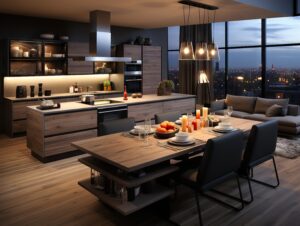
Smaller kitchens also need lighting as it helps to provide the impression of an open and friendly area.When trying to avoid the risk of having excessive fixtures in the room, take into account some simple tips:
Install energy saving bulbs to make the room light and airy.
Small light bulbs like recessed lights, small pendant lights should be used to save space and still have a reasonable amount of light.
Make the most of the natural lighting through painting your walls, cabinets and surfaces with light colours so that they reflect the light
Pro Tip: Houzz suggests minimizing the amount of fixtures one has in the small kitchen and adopts more integrated lights such as under-cabinet lights or recessed lighting to occupy less space in the kitchen.
You can also read about Kitchenette Ideas To Transform Your Space into a Stylish Haven
How Do I Choose the Right Bulbs for My Kitchen?
The kind of bulb you choose is critical to the performance and the feel of your kitchen. Consider the following:
LED Bulbs: LED bulbs are energy-saving and durable and come in a variety of color temperatures. They are good substitutes of task and ambient lighting.
Color Temperature: It allows you to choose a color temperature based on the mood you wish to create. In a kitchen, a cool or neutral (4000K-5000K) white light would work best as a task light but a warmer light (2700K-3000K) would be appropriate as an ambient light.
Dimmable Bulbs: Dim light bulbs can be an effective solution where you perhaps might need to exercise more control over the amount of light being generated. This allows you to control the brightness of the screen depending on the time of the day or the activity that you are engaged in.
Conclusion: How Can I Achieve the Best Kitchen Lighting?
When task, ambient, and accent lighting are combined and each kind of lighting is chosen with a certain purpose in mind, they are the most effective types of lighting. Lighting layers, right lights selection, and consideration of the details of the color temperature, and the kind of the bulb can render your kitchen convenient, attractive, and light.
You might also find other reliable sites such as Design Milk, Houzz, and HGTV very helpful in making the correct decision regarding the kind of lighting that will best suit you and your preferences. The kitchen can also be a pleasant place to work with, not to mention that it is also an excellent place to visit your friends, relatives with good lighting.

